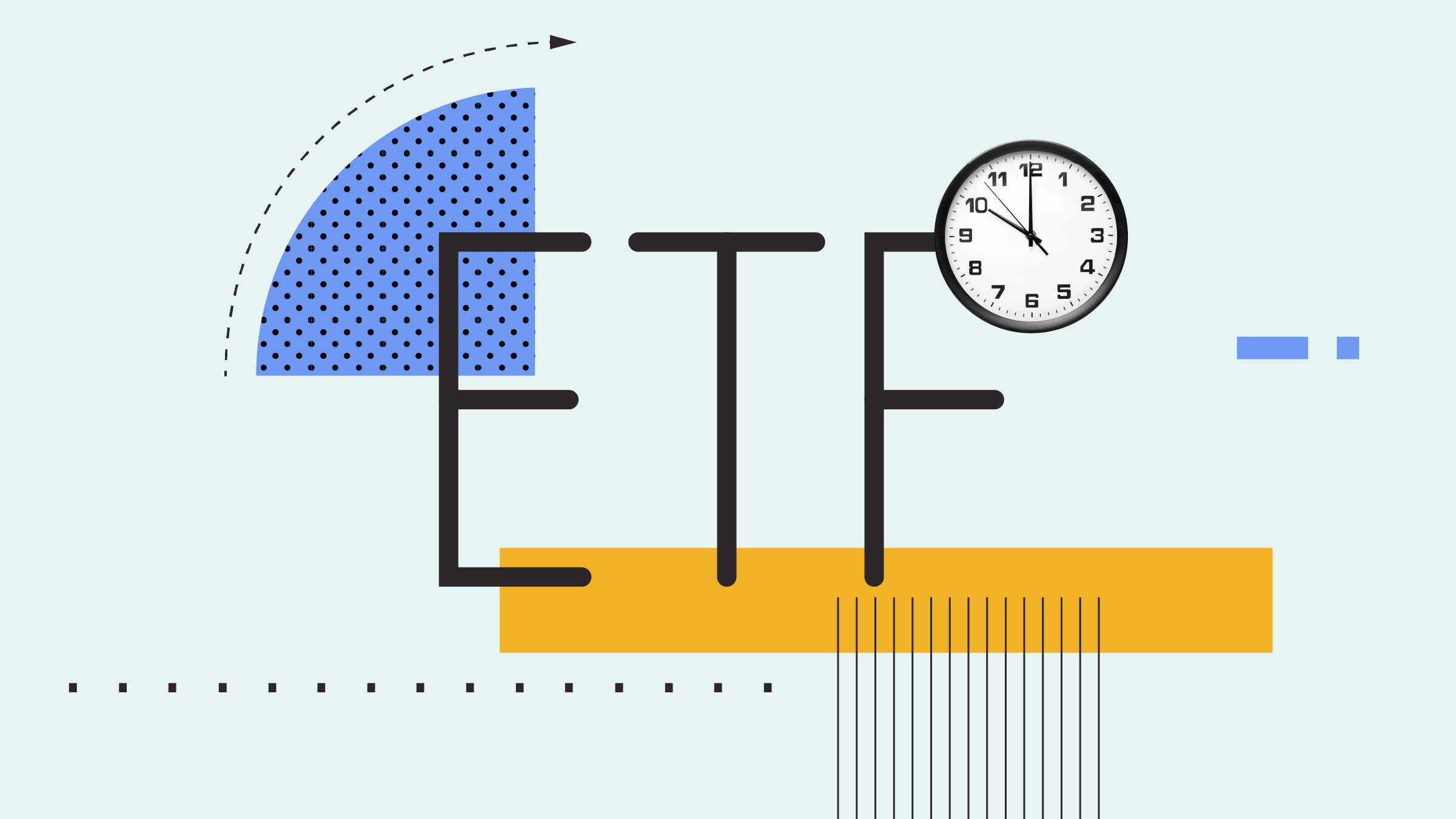Christian Charest: For Morningstar, I'm Christian Charest. The Morningstar Analyst Rating for ETFs was launched almost a year ago. I'm here today with Alex Bryan, Morningstar's Director of Passive Research, to talk about how the rating for ETFs differs from that which is used for mutual funds.
Alex, the rating uses the same five-pillar methodology that's used for mutual funds. But there are some important differences. So, let's go over each one of the pillars. As with mutual funds the most important one is the process pillar.
Alex Bryan: So just to take a step back, so our ratings framework for ETFs when we assign analyst rating is a forward-looking assessment of how well we think a fund is going to do relative to it's category peers over a full market cycle. We use like you mentioned the same five pillar framework that we've been applying to mutual funds and we spend the most time focusing on the process pillar.
So, what we are looking at when we evaluate to process of an index fund is really how the index itself is constructed. The best index funds will be representative of the investment style that they are seeking to capture. They should be diversified because diversification is the only free lunch in investing. They should be sensible in terms of how they are constructed, there should be a good economic rationale behind why the construction approach should work. So, for example a broad-market cap weighted portfolio is sensible because it relies on the collective wisdom of the market and it does that at a low fee. So, we need to make sure that the index itself is put together in a sensible manner. It should be transparent so that you know exactly what it is that you are getting and how that portfolio might change over time. And it should take steps to mitigate unnecessary turnover because there is cost associated with that turnover.
So those are the characteristics that we'll evaluate the index construction methodology on. We also take some time and evaluate how the fund gets exposure to the index that it tracks. Looking at whether or not the fund uses full replication or representative sampling. Looking at how the portfolio managers reinvest dividends, whether or not they are using cash creations or in-kind creations and redemption which may be a bit more tax efficient. So, we dig into all these areas in order to assess whether or not the fund's process gives it a competitive edge against its peers. So this is very important because the process defines what that portfolio will look like and how it will evolve over time. You are really buying into the process when you buy into an index fund.
Charest: Now the second pillar is price and here it's interesting because there are other considerations beside the expense ratio to account for.
Bryan: Yes, so the way that we look at price, obviously if you had to pick one data point to look at, price is probably one of the most predictive at telling you what funds are more likely to outperform. But we evaluate price in a similar fashion to how we look at mutual funds. We look at price relative to the whole opportunity set.
Now most index funds are going to be priced on the low end compared to most actively managed funds. So we look at price not only relative to the whole category, but we also look at price relative to the other index options within the category. So, if you are a fund that's tracking a broadly diversified index and there is something that's very similar for a fraction of the expense ratio, we may not give that a positive price pillar rating even if it's cheaper than active funds. We want to make sure that we calibrate our assessment relative to similar types of funds.
Now as you alluded, the expense ratio does not capture all types of costs that investors face. In many cases it's the biggest part of the total cost, but there are transaction costs associated with rebalancing trades in and out of the portfolio that the expense ratio does not capture. So, to get a better sense of the all-in costs of owning the fund, we can look at the difference between the fund's index's return and the fund's return itself. That will take into account the expense ratio, any transaction costs and any securities lending revenue that the manager might be engaging in to help offset their expenses. So sometimes they are able to help cover some of their expenses by engaging in securities lending. So, we look at the difference between the index's returns and the fund's returns to get a better sense of what that all-in holding cost is, and then we compare that to other index funds in the category.
Charest: Now the performance pillar, I am assuming is pretty straightforward.
Bryan: It is pretty straightforward. Now, for index funds we are looking at how well the fund has done relative to its category peers; that's the main driver of how we assess the performance pillar rating. But we also look at the tracking performance of the fund to make sure that it's tracking in line with its index as investors will expect. Because that's what the fund is supposed to do. But the consideration that's going to move the needle the most is how well the fund has done on a risk-adjusted basis relative to its peers, and we're looking in terms of trying to evaluate the fund and what this performance tells us about the fund's future prospects. We want to see whether that past performance is representative of what investors might expect going forward.
So we look at things like sector concentration: did the fund outperform just because it was in the right sector at the right time? Was that performance in line with what we would expect of the strategy? If you are looking at a low-volatility strategy, for example, you would expect that to hold up better than most during market downturns and maybe lag a bit more during a market rally. So we want to make sure that the performance is in line with our expectations, and we want to understand what's behind it and whether or not that's representative of what investors might expect going forward.
Charest: Now the people pillar is interesting, because we tend to think of index funds as more or less automated. Does it really matter who is in charge?
Bryan: Well it doesn't move the needle quite as much as it might for an actively managed fund. Because really the people that are in charge of the index fund, their whole job is to provide high-fidelity tracking to the index that they are replicating. So, it's not going to have as big of an impact on relative performance as something like process might. But we think it's still important to kick the tires and understand who is behind the management of the portfolio to make sure that they are appropriately staffed and have the right type of expertise in order to do what they are supposed to do, which is to track their index well.
So, the things that we look for when we are evaluating a passive portfolio management team is we look for depth and breadth of experience, because typically larger teams and better experienced teams tend to have better resources to help them with their jobs. In terms of managing any corporate actions, any changes in the index, they are often times better staffed to handle those changes and to more closely track their benchmark. So, we look for those things we also want to make sure that the team has low turnover. If there is a revolving door at the portfolio management team, that's not a good sign. A lot of times you'll see that those types of shops tend to have higher tracking error and may be a little bit less tax efficient in how they manage. So yes, it is important to still look at people, but its not going to move the needle as much as it would on the active management side of things.
Charest: And finally, the parent pillar which is our assessment of the company's stewardship.
Bryan: Yes. So, when we look at parent -- this is something that Morningstar has been doing for a long time -- it's important to look for firms that are both capable and responsible stewards of their investors' capital. So, in order to evaluate whether a firm is a capable and responsible steward of capital, we look at the strength of the investment team. Is this firm able to attract and retain top talent? Because that's a big part of the competitive edge that you might have at the shop. We want to understand the centers of excellence on the investment team -- whether or not the firm is investing in its investment team. And we want to understand whether this is primarily an investment-driven shop or a sales-driven shop. And that tells you a lot about whether or not the interests are aligned with those of fund holders -- investors in the funds -- or whether the firm is trying to prioritize asset growth in its shareholders. So that's an inherent tension that a lot of asset managers face. So, we want to try to understand how the firm is managing that tension and whether or not they are putting fund holders first.
To get a better understanding of the responsibility of the firm, we look a lot at the product strategy. How disciplined is the firm with what it brings to market? Is it providing strategies that have long-term investment merit, or is it launching a lot of trendy or gimmicky funds that are designed to garner assets? So, we want to spend some time trying to understand that, and then we'll also look at potential conflicts of interest that the firm might have in order to assess how that might impact their decisions about whether or not they are going to put fund holders first. In terms of how we evaluate the Parent pillar, it's no different from what we've been doing for a very long time with respect to mutual funds. So, it's important to find a capable and responsible steward of investors' capital; that's true whether you are an active investor or a passive investor.
Charest: Alex, thank you very much for explaining all this to us today.
Bryan: And thank you for having me.
Charest: From Morningstar I'm Christian Charest. Thank you for watching.




















